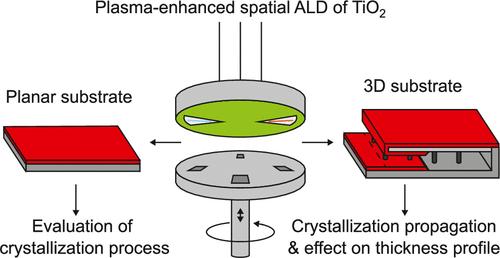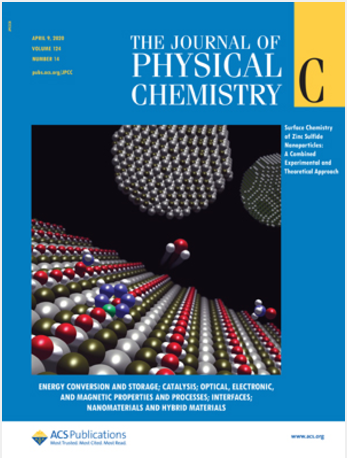Plasma-Enhanced Spatial Atomic Layer Deposition on 2D and 3D Surface Topologies: The Case of Amorphous and Crystalline TiO2
IF 3.3
3区 化学
Q2 CHEMISTRY, PHYSICAL
引用次数: 0
Abstract
Plasma-enhanced spatial ALD (PE-s-ALD) is an interesting technique for high-volume manufacturing of thin films at low-temperature. This technique is particularly appealing for conformal depositions on 3D surfaces for various applications, such as optical coatings, electrolyzers, and batteries. However, various crystallization and growth effects can influence the final film profile and properties, and understanding these effects and their interplay is key. This study investigates the complex growth mechanism of TiO2 using PE-s-ALD. TiO2 films are deposited on both planar and 3D substrates, while systematically varying the number of cycles, deposition temperature, and exposure times. Thickness, crystallinity, and composition are determined as a function of depth inside the structures. Conditions that result in the anatase phase on a planar surface only partially form this phase inside 3D structures, with the deepest part of the film being amorphous. This partial crystallization is ascribed to the film thickness inside the 3D structure gradually dropping below the critical thickness for crystallization. In turn, the partial crystallization is shown to have a significant effect on the resulting thickness profile, due to a difference in growth per cycle between the two phases. A framework of the interplay between effects is proposed, offering insights that enable better control of crystallinity and thickness throughout the entirety of coated surfaces of 3D structures by PE-s-ALD. Additionally, the recombination probability of oxygen radicals during this atmospheric-pressure PE-s-ALD process at 200 °C is determined to be 3 × 10–5. This value is similar to low-pressure PE-ALD, indicating that differences in conformality between the two types of ALD are not the result of differences in recombination probability, but rather of differences in initial radical density and diffusion behavior.

求助全文
约1分钟内获得全文
求助全文
来源期刊

The Journal of Physical Chemistry C
化学-材料科学:综合
CiteScore
6.50
自引率
8.10%
发文量
2047
审稿时长
1.8 months
期刊介绍:
The Journal of Physical Chemistry A/B/C is devoted to reporting new and original experimental and theoretical basic research of interest to physical chemists, biophysical chemists, and chemical physicists.
 求助内容:
求助内容: 应助结果提醒方式:
应助结果提醒方式:


